Define the brand.
The seed-stage startup was establishing itself with a proven SaaS product and customer base. I was approached to bring credibility with a coherent brand system and reduce the overhead time on new brand initiatives.
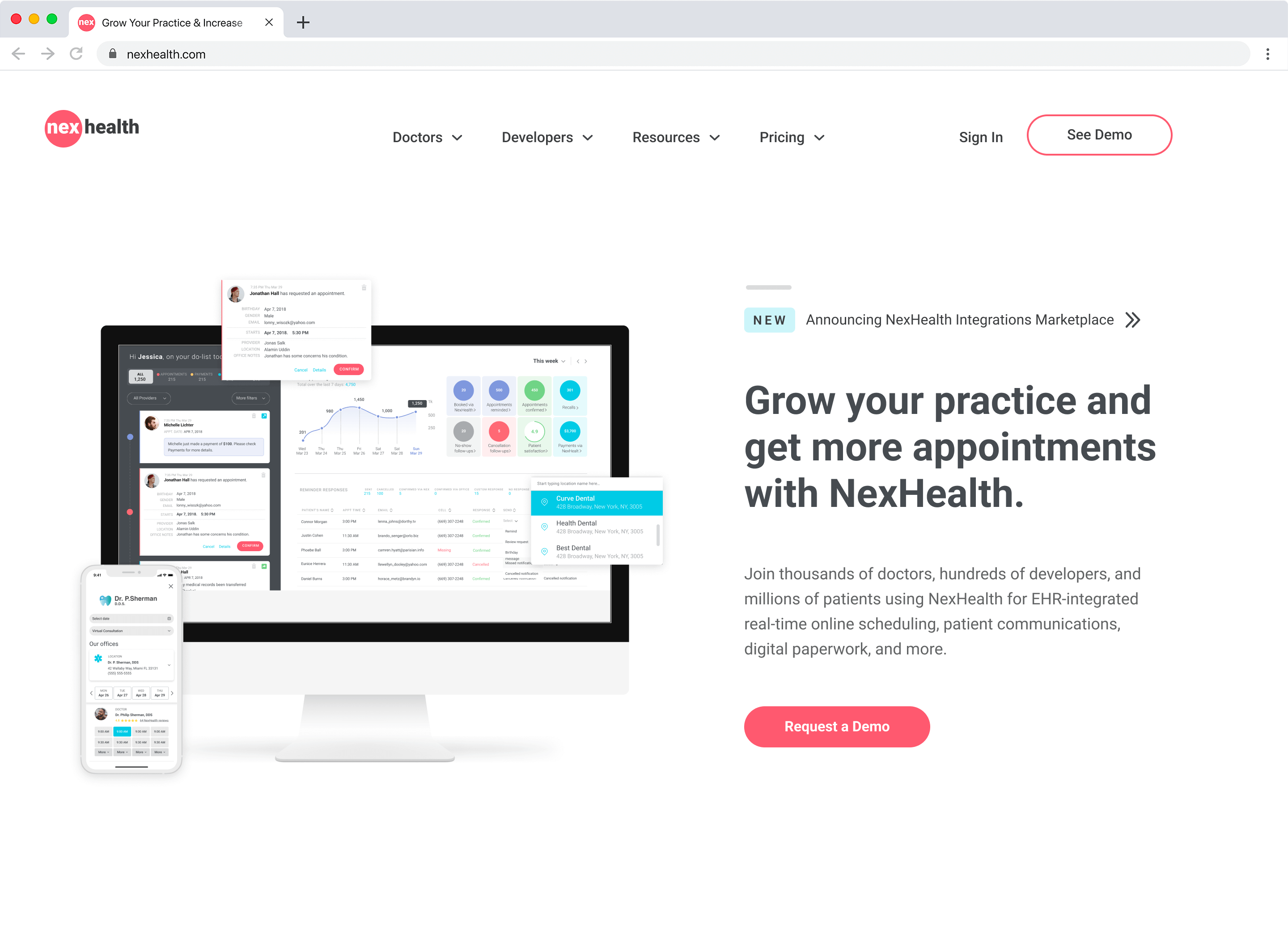
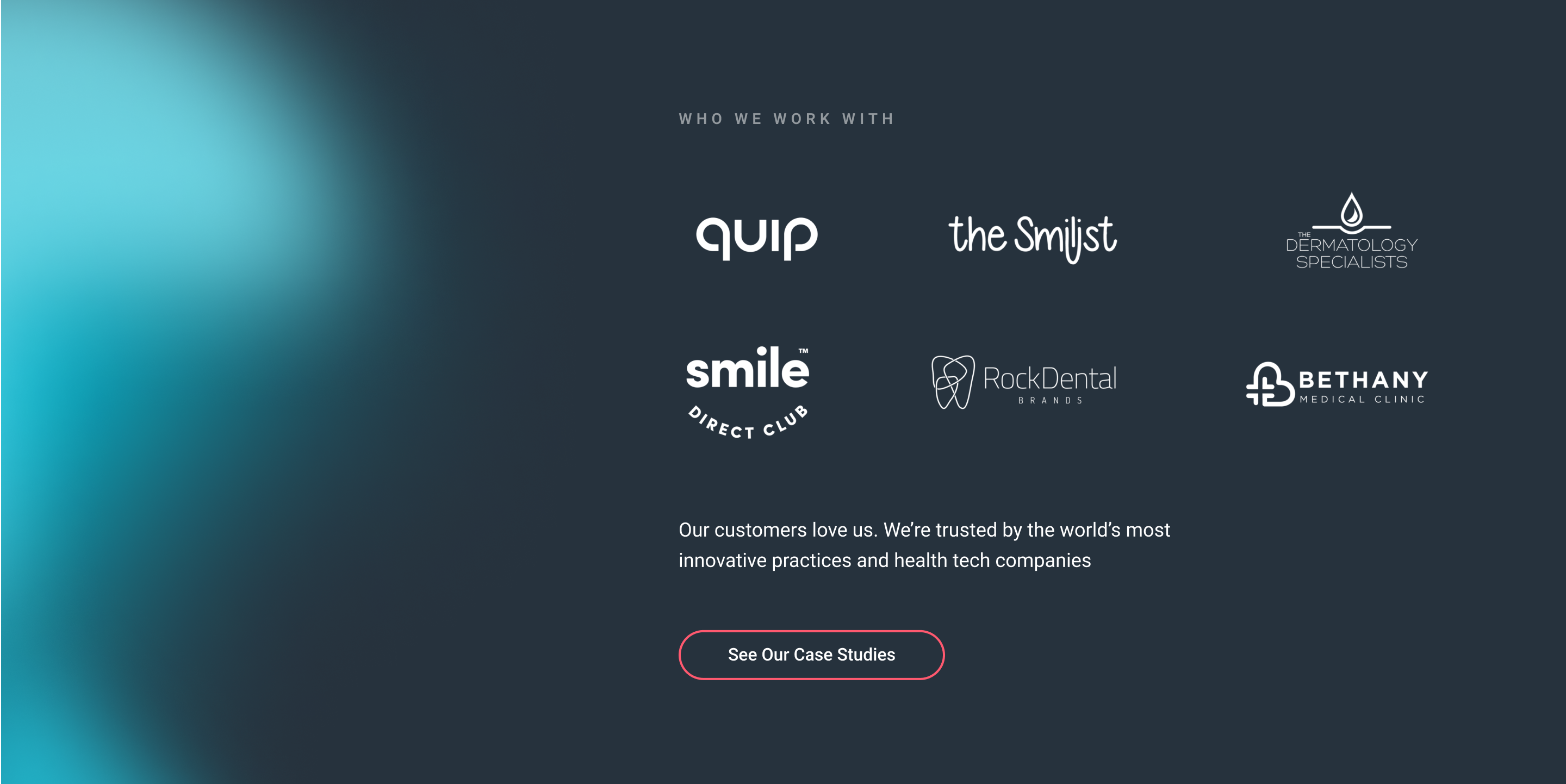
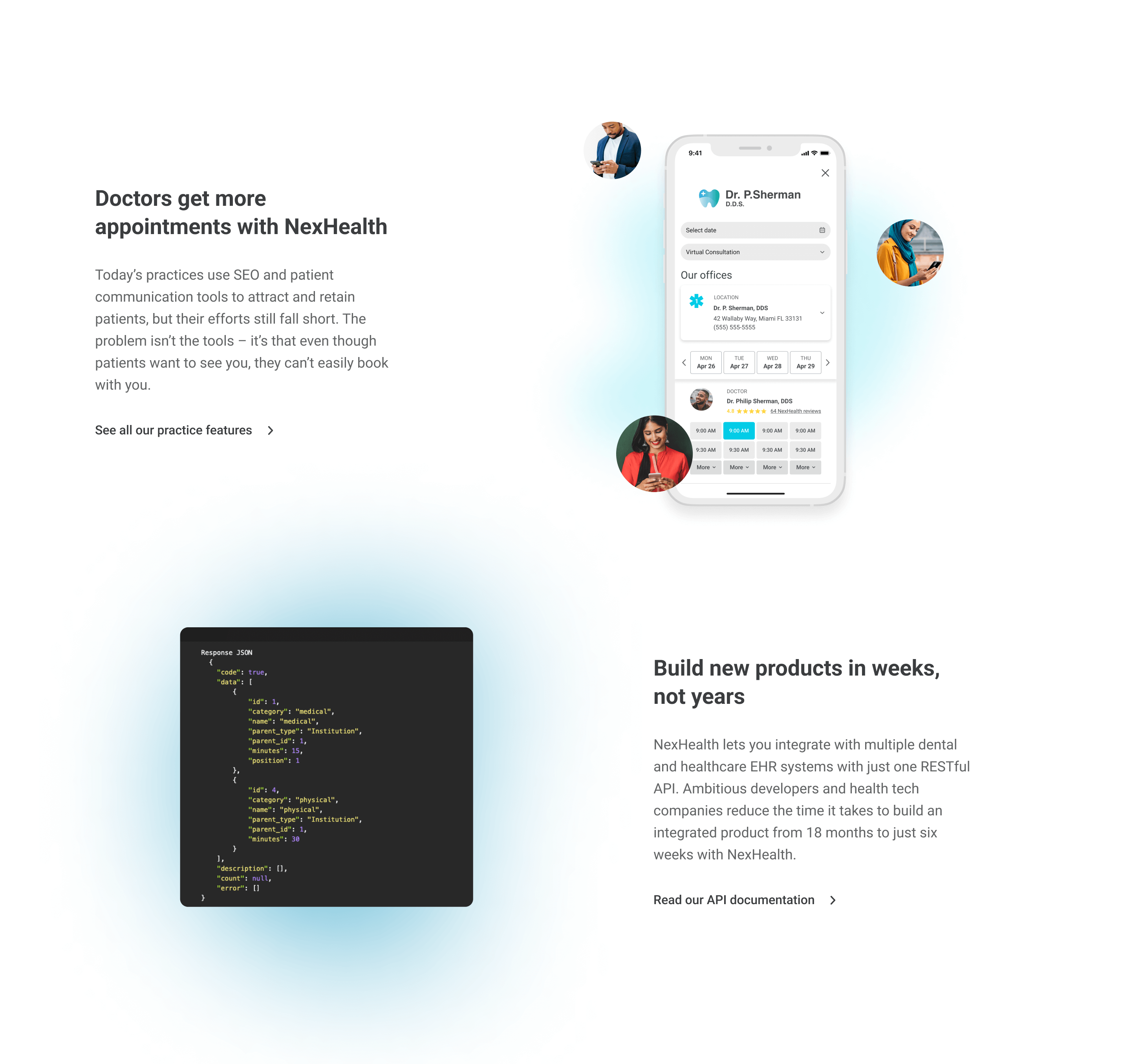
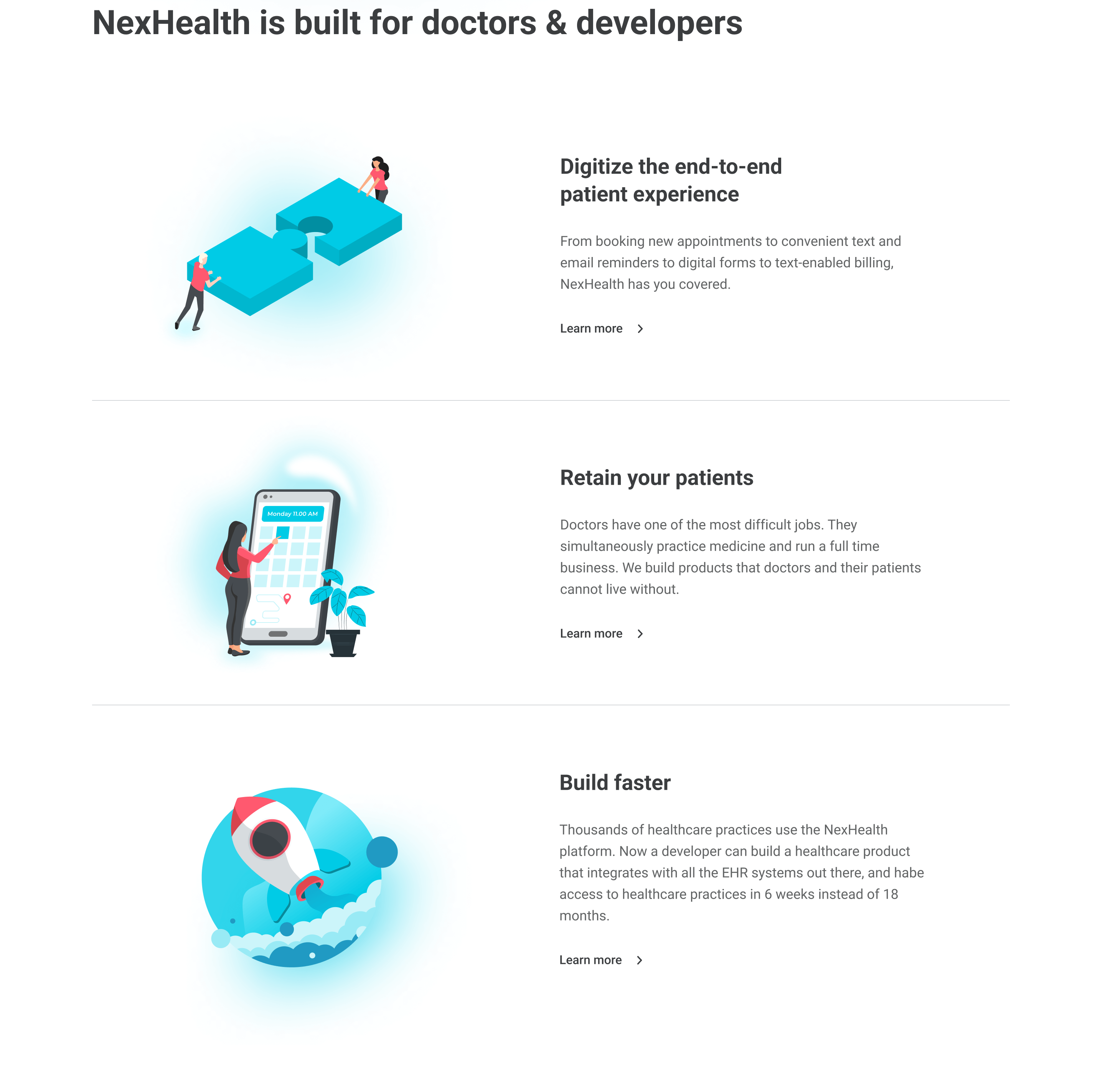
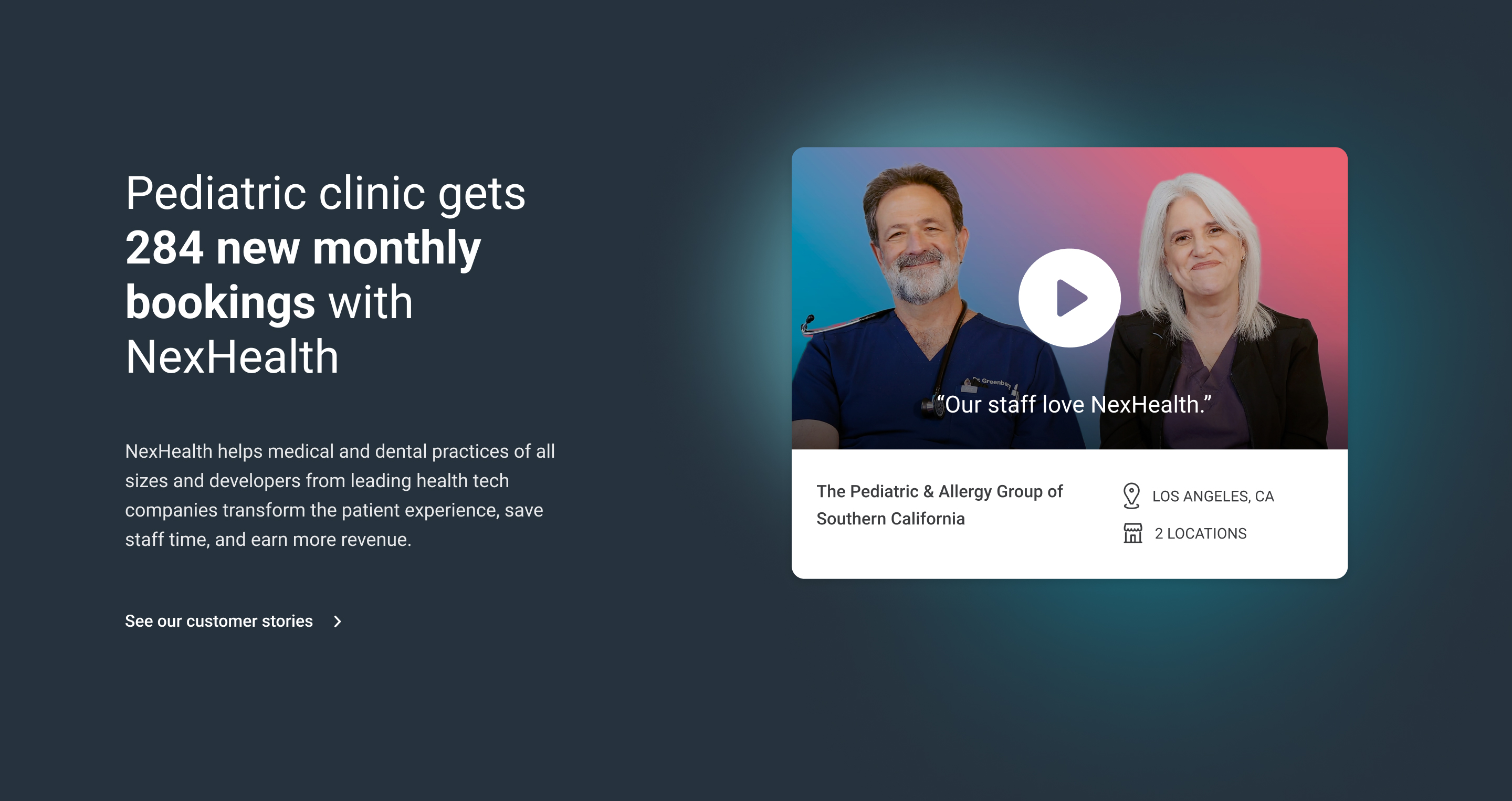
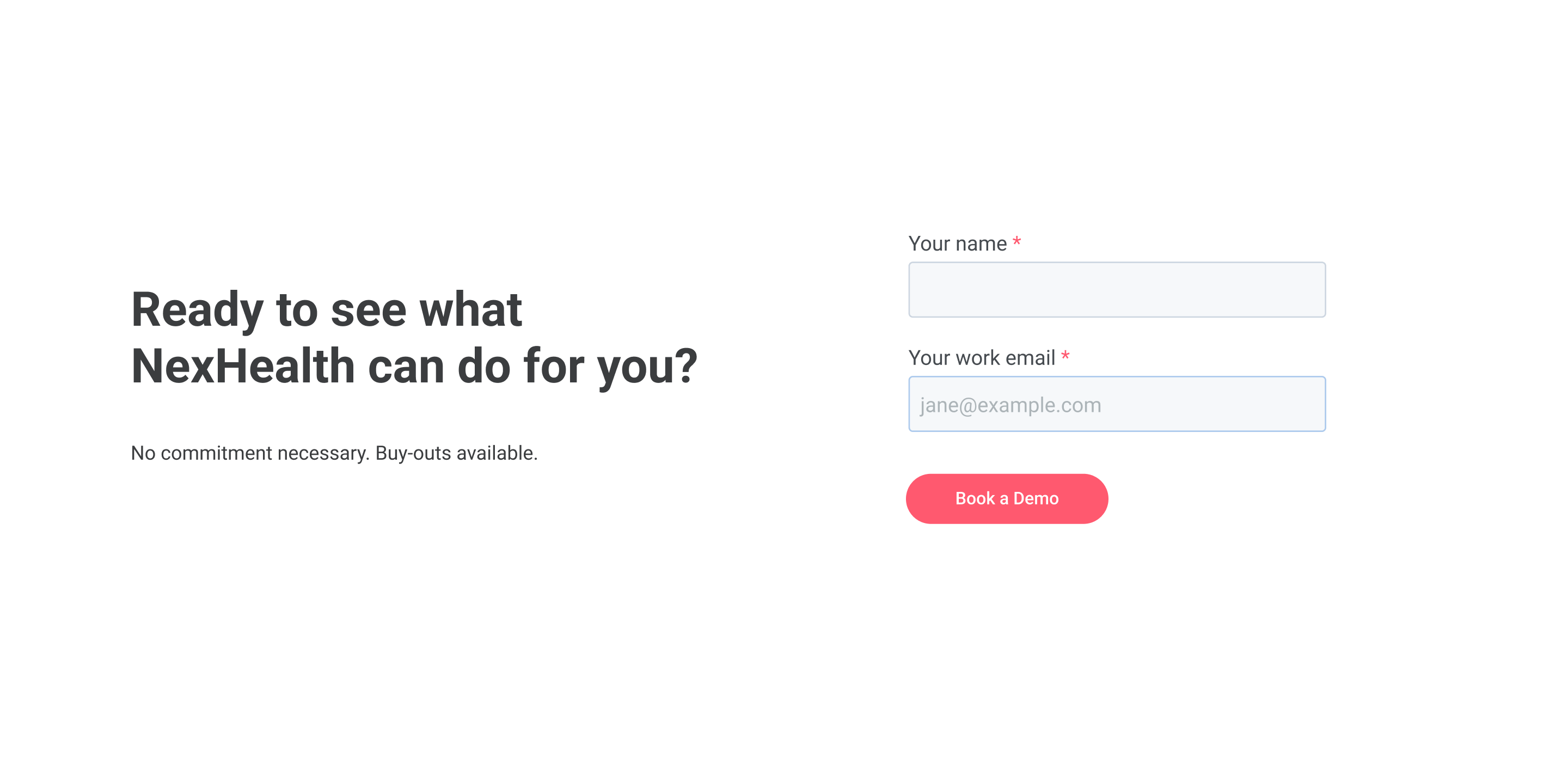
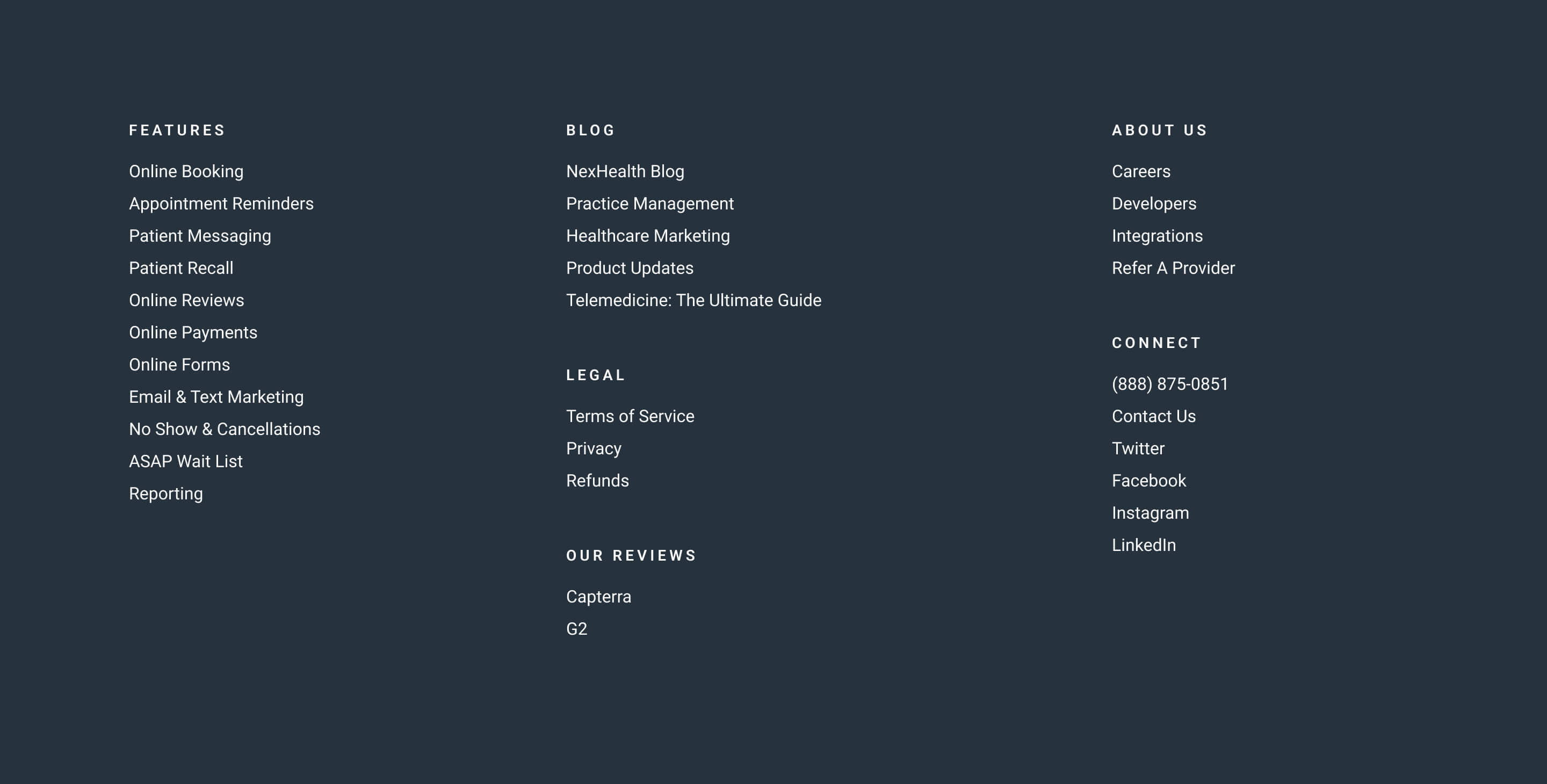
I set out to become deeply familiar with the platform. NexHealth's mission is to accelerate healthcare innovation by connecting patients, doctors, and developers. Thinking in terms of a flywheel, you have the doctors using the SaaS product to instantly modernize their practice with instant online booking, payments, marketing, and more. Next, you have developers building products with NexHealth's API and electronic health record (EHR) integrations, leveraging healthcare data, with the ability to reach practices in weeks instead of years. Last, you have the patients (consumers) who are engaging in the ecosystem. Each of them (doctors, developers, and patients) feeds each other.
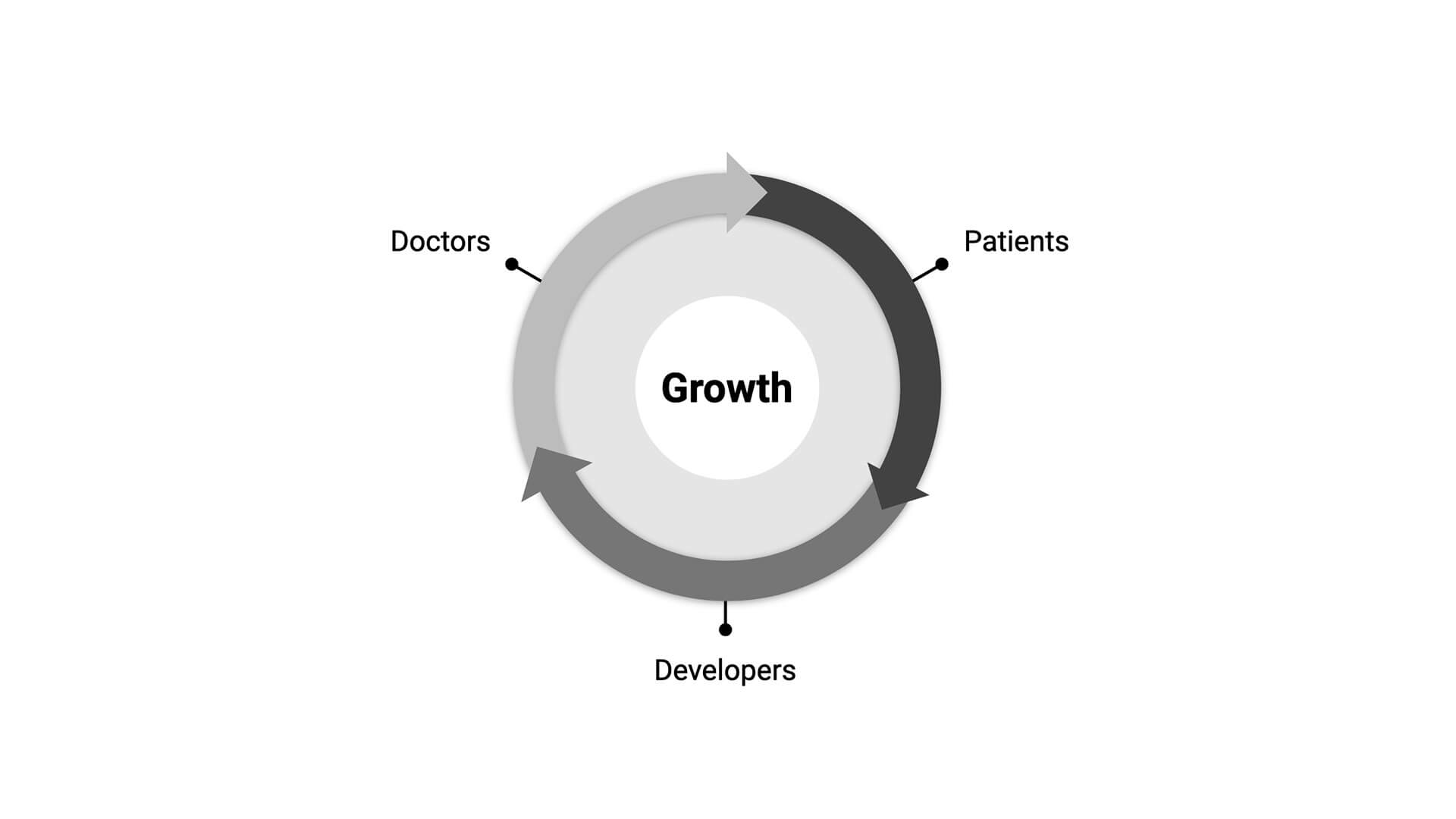
The criteria
After I had a firm grasp of NexHealth's platform and offerings, I worked with stakeholders to define the criteria for the brand's goals:
Better represent who NexHelath is and how we want to be seen
Be scalable and allow for flexibility across a range of touchpoints
Be differentiated from our competitors
Release ASAP without detracting from current daily brand initiatives

Defining "who we are"
Working cross-functionally with key stakeholders, we broke this down into what we do, why we do it, and how we do it. The "what" is defined by our mission: accelerate healthcare innovation by connecting patients, doctors, and developers. Our "why" is our purpose: to modernize the patient experience. The "how" is what helped define our brand and design system. Through internal and external interviews, we developed traits that summarize how we want to come across to our customers and partners.
Assertive (matter of fact and mission-focused)
Tenacious (we're super driven)
Supportive (focus on an amazing customer experience)
Aware (the healthcare ecosystem is complicated, we never want to oversimplify)
This was instrumental in developing both our messaging and visual systems. For example, customers love the user interface and experience of the platform: "The Nexhealth platform is so nice to look at all day compared to what else is out there." This insight inspired the product's interface to be a major visual component of the design system.
Design process
Utilizing cycles of divergence and convergence, we started by sketching out as many minimally viable ideas as possible and reducing them down to a few key contenders. Once we decided on a general direction there's a second divergent phase where we took a single element, like typography, and explore it in a focused way.
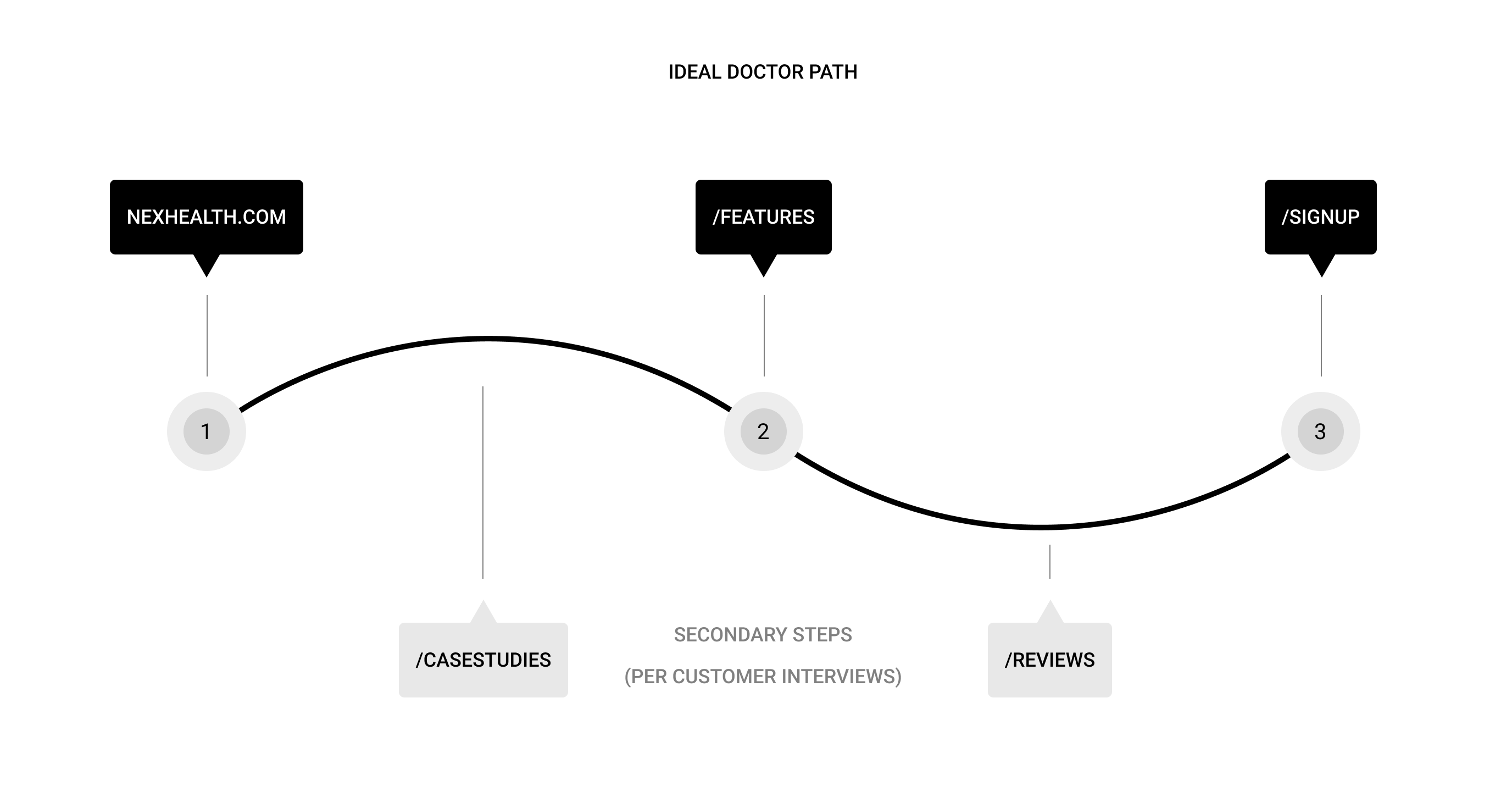
Testing
The website was the first real test for the brand and design system, which allowed us to iron out details around interactivity and specific user behaviors. Taking inspiration from the product team, we approached the website by identifying the key users, mapping out their critical paths, and testing according to those paths.
We stack ranked our key users (doctors and developers)
Determined our north start metric (demo signups)
Hypthosized user needs, what a successful site visit looked like, and what their critical paths were
We worked closely with the sales and customer experience teams to source new or prospective customers, to glean insights and learnings through conversations.
A rewarding experience
I've worked with companies and startups with established guidelines. This was an opportunity for me to learn what a brand identity and design system process is like from conception to execution. The work we created gave credibility to NexHealth's mission and saved substantial time when creating new brand outputs.
Credits
Senior Brand Designer / Patrick Kenney
Studio / Herman Scheer
VP Growth and Marketing / Kyle Johnson
Product Marketing / Chelsea Robinson